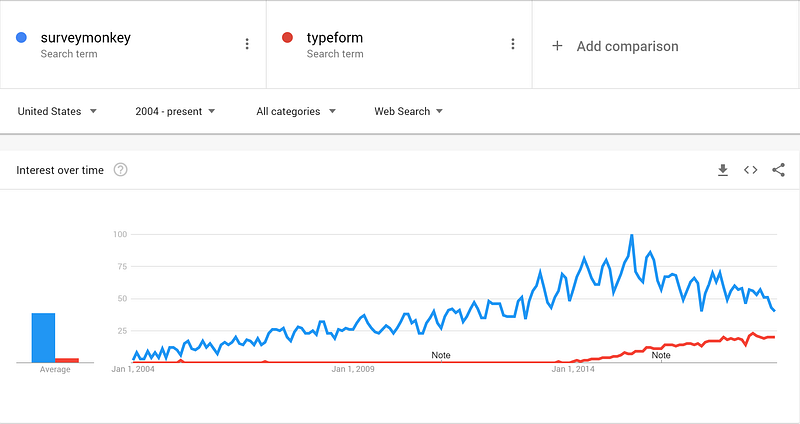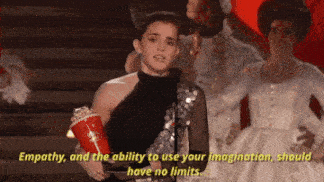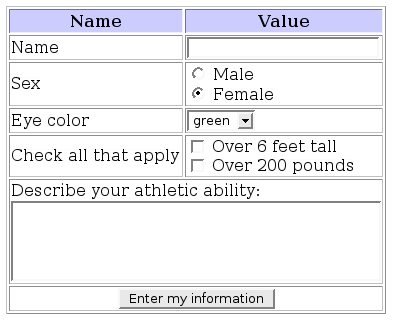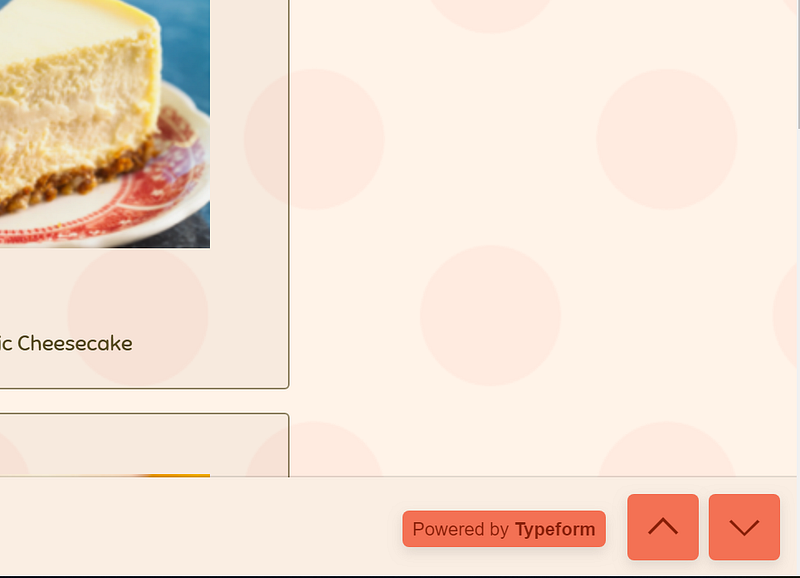Typeform: Convertir formularios en conversaciones humanas
Productos icónicos Episodio 009
Antes de empezar, un disclaimer: uso Typeform y me encanta. 😍

En Salesflare utilizamos Typeform desde hace tiempo y no me gustaría utilizar ningún otro software de encuestas con nuestros clientes.
Me encanta que la experiencia sea mucho mejor que con cualquier aplicación de la competencia. El uso de Typeform hace que la interacción con Salesflare sea un poco más humana, algo que valoramos mucho. ❤️
Typeform hace que nuestras relaciones con los clientes sean más humanas.
A pesar de todo, nunca he podido concretar cómo lo hacen. Por qué ninguna otra aplicación parece comparable. Y cómo Typeform mantiene esta ventaja durante todos estos años. ¿Por qué nadie les gana?
Así que me embarqué en nuestra novena búsqueda de productos icónicos, investigando qué es exactamente lo que hace que Typeform sea tan icónico.
Vamos 👇
Hacer las cosas un poco más humanas
La chispa de Typeform surgió cuando los fundadores estaban creando un formulario para clientes potenciales que se utilizaría en un espacio de exposición. Ya sabes, esas cosas que captan tus datos.
Querían hacerlo mejor que lo que habían visto antes. En lugar de limitarse a crear un formulario estándar, querían crear algo que realmente llamara la atención y atrajera a la gente.
Detectaron una falta de empatía en la forma en que la mayoría de las empresas solicitaban los datos. Pasar de las conversaciones cara a cara a los formularios en línea parecía un paso muy grande. La gente seguía escribiendo en casillas y pulsando botoncitos, lo que no parecía una experiencia muy humana. 🙄
Inspirados por la película "Juegos de guerra", en la que el protagonista mantiene una conversación mecanografiada con un ordenador central, pensaron que podían crear un formulario que se pareciera más a una conversación.
 La inspiración de Typeform: Juegos de Guerra. ¿Lo ves, o no? 😏
La inspiración de Typeform: Juegos de Guerra. ¿Lo ves, o no? 😏Se propusieron crear algo más encantador que rellenar unas casillas. Querían eliminar la barrera entre humanos y ordenadores.
Años más tarde, lo resumieron en la declaración de visión de Typeform:
Hacer las cosas un poco más humanas.✨
Typeform cree que los formularios no sólo sirven para recopilar los datos que necesita, sino también para controlar la impresión que dejan. O como ellos suelen decir: "Cómo preguntas lo es todo". 🤯
Typeform antepone la experiencia humana a los datos
El ADN de una empresa suele comenzar con sus fundadores.
En el caso de Typeform, la forma favorita de los cofundadores de pasar el día es diseñando. Es cuando realmente les fluye la energía. 🤩
Su mayor competidor y líder del mercado, SurveyMonkey, es por ADN una empresa de análisis de datos. Typeform es diferente. Es una empresa de interfaces de usuario.

Por supuesto que al equipo le importan los datos. De lo contrario, no estarían creando un software que recopila datos. Pero tienen una mentalidad "las personas primero, los datos después".
Creen que hay que estar "informado por los datos, más que guiado por los datos". Lo que significa que reconocen el poder de los datos, pero nunca dejarán de lado su instinto.
Se trata de combinar la percepción del cliente con los índices de conversión. Equilibrar sentimientos y hechos. La intuición y las métricas.
Typeform antepone el diseño empático al diseño basado en datos.

El equipo de Typeform a veces dice que trabajan en HX, no en UX. Experiencia humana, no experiencia de usuario.
La experiencia del usuario consiste en llevar a una persona de A a B con éxito. HX va más allá. Se pregunta: ¿han llegado al punto B con una conexión emocional?
El equipo de Typeform piensa en los humanos. En personas reales. ¿Cuáles son sus necesidades? ¿Sus emociones?
Requiere pensar en quién es realmente el usuario. Acercarse a ellos. Comprenderlos. 🤗
Para ello, Typeform investiga mucho a los clientes. Y no es sólo el equipo de producto el que prueba constantemente nuevas ideas con los clientes. El equipo de go-to-market también está trabajando para intentar acercarse a los clientes, para entender dónde reside realmente el valor para Typeform, qué es lo que realmente quieren.
Al final, la conexión emocional es lo que hace que la gente se enamore de un producto. ❤️
El diseño de Typeform es el resultado de un enfoque implacable
Parece que estos chicos de Typeform son unos genios, ¿verdad?
Aunque parte del éxito del software podría atribuirse a la inteligencia y a las decisiones inteligentes, probablemente sea más el resultado de una concentración extrema. Es la inversión incesante de tiempo y recursos en un objetivo claro.
Lo que ves hoy cuando rellenas un Typeform es el resultado de obsesionarse con cientos de pequeños detalles durante mucho tiempo. El equipo trabajó incansablemente a lo largo de muchas iteraciones, cuidando una a una las partes más pequeñas de la interacción del formulario.

Al centrarse constantemente en la facilidad de uso, el toque humano y el diseño atractivo, Typeform reinventó algo que existía desde hacía décadas. Y no dejaron de perfeccionarlo y ampliarlo para mantener su singularidad.
Y a Typeform le ha servido de mucho. En un mercado saturado como el del software de formularios, competir copiando lo que ya existe habría sido infructuoso. En su lugar, Typeform produjo algo que la gente quería y aún no tenía: una forma atractiva de crear formularios atractivos.
Nos dan formularios que no parecen formularios
Levante la mano si le gusta rellenar formularios...
Sí, no me lo imaginaba. 😏
Todos necesitamos comunicar datos, pero no nos gustan los formularios. Queremos formularios que no parezcan formularios.

He aquí cómo hacer que los formularios sean más humanos.
De uno en uno
Typeform divide la interfaz del formulario en componentes más pequeños. Usted no ve una gran lista de preguntas, pero sólo uno a la vez y entonces tiene un flujo natural de las cosas que vienen.

Esto lo hace más manejable, lo hace más motivador y mantiene a la gente más comprometida.
Fuentes más grandes para conversaciones más humanas
Una pregunta a la vez significa que hay más espacio en pantalla que se puede utilizar.
Y al utilizar fuentes mucho más grandes que la media de los formularios, los creadores de formularios también se animan a plantear preguntas más directas y más humanas. Y quienes lo rellenan dan respuestas más humanas.
Sin cajas, menos botones
Escribir en recuadros y pulsar botoncitos no parece muy humano. Por eso Typeform funciona con una línea de texto y un cursor. Una pregunta y la posibilidad de responder. Eso es todo.

¿Te gustan mucho los botones? Lo demostrarán. Pero si no quieres tocar el ratón y utilizar sólo el teclado, es totalmente posible. Sólo tienes que pulsar "intro" o una de las teclas de acceso directo indicadas junto a la respuesta.
Más allá del texto
Un formulario habitual es una gran hoja de texto, en la que se pide más texto.
Typeform le permite crear fácilmente formularios con iconos, imágenes, gifs y vídeos. Hace las cosas más visuales. Y, de nuevo, más humanas.

Typeform crece gracias a la viralidad y las integraciones
Como todos los productos que crecen a la velocidad de la luz, sus mecanismos de crecimiento son especiales e inherentes al uso principal del producto.
1. Crecimiento viral: cada formulario enviado es un anuncio para Typeform
La gente envía formularios. Estos formularios son hermosos. Y contienen una sutil mención "Powered by Typeform".

Tan simple como eso, pero este botón equivale a 50% de las inscripciones de Typeform. 🚀
2. Integraciones: la gente se queda si Typeform forma parte de un flujo de trabajo.
Las integraciones son excelentes para la retención de Typeform. Si sólo envía una encuesta una vez, es posible que no necesite Typeform después de eso. Y puede que acabes dejando de suscribirte. 🛑
En cuanto incrustas formularios en un flujo de trabajo, todo cambia. No se puede dejar de utilizar Typeform. Eso requeriría reemplazar el formulario o incluso detener todo el flujo.
Por eso Typeform dedicó mucho tiempo a construir sus integraciones con MailChimp, Google Sheets, Zapier, ... y por eso permite incrustar formularios en cualquier sitio web.

3. Marca: la gente sólo elige Typeform si siente que es diferente
El equipo de Typeform invirtió una enorme cantidad de tiempo y recursos en comprender y redefinir su marca. Y luego rehaciendo todos los diseños.

Quieren asegurarse de que la gente entienda el lado humano de la empresa y cómo hacen los formularios más humanos. De ese modo, quieren crecer más allá de ser solo una empresa de software. 🦄
Y también quieren empezar a comunicar claramente la otra cosa que Typeform quiere superar: ser sólo formularios.
Typeform quiere ir más allá de los formularios
Desde el principio, los fundadores de Typeform tuvieron la visión de hacer la comunicación más humana.
Empezaron con formularios y se llamaron a sí mismos Typeform. Ahora quieren ir más allá.
Intentan dejar de ser percibidas como una herramienta para crear formularios o encuestas y pasar a ser percibidas como una herramienta de comunicación. Hacia la comunicación humana en general.
De momento, puedes usar Typeform para organizar encuestas, formularios de opinión, cuestionarios, historias interactivas, ... pero apuntan a mucho más. 🔭

Typeform le permite mantener una conversación a través de una interfaz. Puede dar datos y conectar datos con Typeform. Puede crear flujos de trabajo.
La gente siempre tendrá que recoger información de otras personas. La cuestión es cómo lo harán. No siempre será a través de un navegador o un formulario. Entre otras cosas, el equipo ya está estudiando el uso de IA, RV y tecnología de voz. Organizar y transcribir conversaciones automáticamente.
Typeform se dedica a crear interfaces conversacionales y a averiguar cómo van a sustituir a las interfaces tradicionales de apuntar y hacer clic.
Y no pararán hasta alcanzar todo su potencial. 🙌
Bonus: Typeform... ¿qué hay en el nombre?
Alguna vez te has preguntado qué significa el nombre Typeform? 😏

Según su cofundador, David Okuniev, se refiere a:
- La posibilidad de escribir en el formulario sin tocar el ratón
- El hecho de que es un tipo diferente de forma
- La importancia de la tipografía en su producto
¿Quiere ver más productos icónicos? Lea toda la serie aquí. 📲
Esperamos que te haya gustado este post. Si es así, ¡difúndelo!
Para más información sobre startups, marketing de crecimiento y ventas:
Última actualización:
- 7 mejores CRM para Mac en 2025 - 19 de septiembre de 2025
- 7 mejores alternativas de CRM HubSpot en 2025 - 17 de septiembre de 2025
- 7 mejores alternativas a Pipedrive en 2025 - 16 de septiembre de 2025